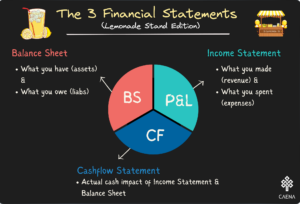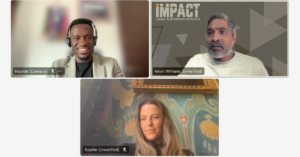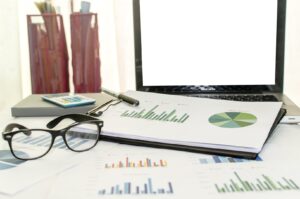Starting a new business comes with mixed emotions; it can be as daunting as it is exciting. You are finally doing something you believe in, with the potential of making an impact, and maybe making some money at it. However, while doing something you believe in is exciting, running a startup also comes with daunting tasks; one of them building a financial model. You need to create this model to have a financial forecast for your startup’s future performance.
One of the biggest challenges early stage founders face while building financial projections is the concept of working with assumptions for years into the future. These financial model assumptions drive the projections of your cash flow, revenue, and earnings. These determine how viable the rest of your financial model is.
The process can be overwhelming but we break it down into manageable tasks so it is less daunting. Let’s look at how to put together assumptions for your first financial model.
Choosing Financial Model Assumptions
Let’s pick a business to make this easier. Say you’re starting a pastry shop called Dee’s Nook. It’s the cutest pastry shop on one of the busiest streets in your city. You would sell the most heavenly baked goods; the smell would waft into the streets and remind people of their grandma’s baked goods. The UK Bakery market is a £3.6 billion industry. So why not jump in?
Superb idea. However, before you go on, you need to make quite a few assumptions about your business to build a financial model. They include revenue and expense assumptions mainly. We explain them below:
1. Revenue Assumptions
How will you make money for your business over the next few months and years? The answer to this question is the basis for your revenue assumptions and flows into your mode. It’s as simple as that.
A great way to build out the revenues section is to start by figuring out what you believe to be the most accurate representations of the revenue you hope to receive. This will help you make feasible financial forecasts.
The revenue for a simple goods business like our pastry shop example is a function of two basic assumptions – volume and pricing.
- How many baked goods do you project you’ll sell per day every year?
- What’s the average price of the baked goods you’ll sell?
2. Cost Assumptions
It would be great if all it takes to run a business were revenue but unfortunately there are costs involved as well. To build a solid, long-term successful business, costs must always be less than revenue. These are assumptions you make about the cost of your business. They include direct and indirect.
For Dee’s Nook, you would have to answer questions like the following:
- What is the cost of the ingredients you need? For example, how much does it cost to buy flour, sugar, butter, etc.?
- How many baked goods will the ingredients yield?
- How much do you cost time and labor?
- What’s the average rent you would pay?
- How much more would you pay for utilities such as electricity and heating?
- Would you be paying for any baking equipment upfront?
- What other costs are you paying to be able to run my business smoothly? For example, are you providing perks such as free WiFi? How much would you be spending on that?
- Don’t forget tax! How much would you need to pay for tax?
3. Other Assumptions
You can input other assumptions that do not fall under the above. For example, for Dee’s Nook, you can identify some of the relevant assumptions by answering the following questions:
- How many working days are there in a year?
- Will you be catering events as well as selling baked goods to retail customers?
- Are there peak periods in the year for selling baked goods? Will seasonal variance affect sales?
Choosing Assumptions for Non-Existing Businesses
Now, it might be easier to create assumptions for a bakery or some other ‘brick-and-mortar’ business that already exists somewhere. Then, you can pop into a few bakeries, buy a donut (or a dozen), and just sit and watch how the business works.
However, if your startup idea is a business that does not precisely exist yet, you would need to do a bit more research into businesses that offer similar services or products. This is called benchmarking. You can also use your historical data if you are already selling the product/service before creating your financial model.
Another great way to go about this is to make range assumptions instead of point assumptions. So, instead of saying Revolutionary Product A will cost £200 and you will make ten sales every day, your assumptions can say Revolutionary Product A will cost £200 – £250, and you will make 5 – 10 sales daily.
Caena — Financial Modelling Made Simple
We try to make the daunting parts of building a startup less daunting, so that founders can focus on the exciting parts. That’s why we created Caena — a user-friendly tool that makes building financial models easy. All you need to do is the assumptions, and we’ll take care of the rest.
With Caena, you can build your financial models in as little as 30 minutes and get all you need, including full projections, charts, and critical metrics. You’ll never again have to google a spreadsheet formula for your financial model.
To gain early access to the platform and simplify your fundraising, please sign up below





